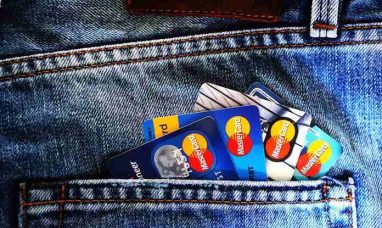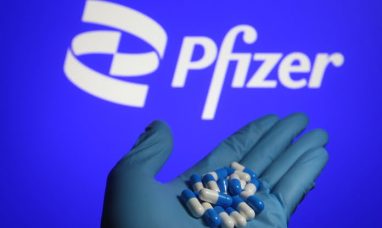In this piece, we’ll look at Nike’s strategy, capital allocation, growth potential, and moat. Finally, I’ve changed my mind about NIKE, Inc. (NYSE:NKE). For the next ten years, I estimate only 2% yearly gains.
Nike CEO John Donahoe’s Future Plans
In 2020, Nike’s CEO will be John Donahoe. He inherited a terrific company with decades of compounding growth and tremendous returns on investment.
I recently read Nike CEO John Donahoe’s 2022 shareholder letter, and it sparked some concerns for me. The most important thing to remember when you have a great business idea is to keep it that way. Nike’s corporate strategy, on the other hand, has recently transformed.
Nike’s e-commerce alternatives have grown in recent years. Nike’s direct-to-consumer customers in the United States receive free shipping. Customers appreciate free shipping, but it comes at a great cost to Nike. Mailing shoes in bulk is substantially less expensive than shipping to particular addresses. Nike’s cash flows have plummeted, joining other e-commerce players such as Amazon (NASDSQ:AMZN) in similar predicament.
Nike has reduced its reliance on third-party merchants such as Foot Locker (NYSE:FL) by operating its own physical retail stores. By running both physical stores and an online store, Nike is taking a big risk (as shown by the company’s erratic cash flows). I preferred the strategy when it was just about having branded items. I understand Nike’s desire to create these connections with its clients both online and offline. Nike has also started breaking ties with companies such as Amazon and Urban Outfitters (NASDAQ:URBN), according to Forbes:
“[Nike] discontinued selling directly on the online giant [Amazon], although Nike products are still available on the marketplace through third parties.
Since it began cutting back third-party selling, it [Nike] has dropped a number of big national retailers, including DSW, Zappos, Dillard’s, Urban Outfitters and Shoe Show.”
Nike’s Capital Allocation
Nike’s returns on assets (ROA) have been dropping in terms of capital allocation since 2017:
Nike has invested in environmental projects such as “Space Hippie” and owns equity in the WNBA (Women’s National Basketball Association). Yes, there are costs involved with developing an inclusive brand.
Nike’s direct-to-consumer initiatives may be the other side of the company’s declining ROA. If these investments will result in returns for shareholders is yet to be determined. Since the beginning of the year, Nike’s net income has only climbed by 6% yearly. A Moat Has Been Built By Nike? In a nutshell, Nike benefits from share of mind and has a brand moat.
To build this moat, Nike has spent years working with famous sportsmen like Michael Jordan. Michael Jordan, Cristiano Ronaldo, LeBron James, Tiger Woods, and Rory McIlroy were Nike’s five highest-paid athletes in 2021. Between $25 million and $100 million will be paid to these athletes by Nike in 2021. How quickly can Nike expand? The worldwide footwear market would expand at a 4.3% annual rate until 2030, according to Grand View Research.
According to a different source, the market for athletic footwear would grow at a 4.8% CAGR between 2018 and 2028. While Nike’s market share has increased over the last ten years, this is not a rapidly rising business, and it is expected that its 27% market share in athletic shoes will eventually reach its peak.
Given the current situation of the footwear industry, it is only natural to believe that Nike’s market share will eventually peak. The business controls over a third of the athletic footwear industry. In my perspective, Nike should maintain a market share of between 27 and 30 percent. This considers the possibility of future gains as well as the danger of losing market share. Nike may face headwinds in established markets in addition to the tailwinds in emerging regions that have been noted. 41% of Nike’s sales currently come from North America.
Despite the exceptionally low unemployment rates in the US and Canada recently, anything might change. Nike’s high net income and poor free cash flow (FCF) are currently out of sync. Nike’s profit margins may still have potential to deteriorate given that they appear to be at a peak and the company’s inadequate cash flow.
The disparity between cash flow and net income is a regular occurrence across businesses. Nike’s inventory has grown over the last year. I believe that eventually, cash generation will increase again, closing the gap.
Nike stock buybacks are another component in the company’s growth, however at such high PE levels (36), they have little impact. Even the notion that they are blown capital has merit. So what can I anticipate? I think Nike will gain from the industry’s inevitable growth. Over the following ten years, I also anticipate Nike will continue to hold a great market advantage. I think the business can increase earnings per share by 7.5% annually, even after accounting for the diminished impact of share repurchases and other investments.
Long-Term Profits
Long-term returns are calculated using base-case scenarios and economic assumptions. My Nike share price projection for 2033 is $128, so if it comes true, investors will make only slightly more than the dividend yield.
Nike’s $3.55 earnings per share will grow at a 7.5% yearly rate until it reaches $7.30 by 2033. (EPS effectively doubles). I chose a terminal multiple of 17.5x, which is half of Nike’s PE multiple.
I believe Nike’s multiple will fall because it is not rapidly expanding and acquiring market share. Since the turn of the century, the average S&P 500 company’s earnings have climbed by 5.5% each year, resulting in a median PE multiple of 15x.
Nike should be able to boost its dividend at a rate of 7.5% each year.
This pessimistic forecast is bolstered by the fact that Nike has become substantially more expensive over time.
Instead, because its growth rate is less pronounced, Nike should become more affordable over time.
Nike is a fantastic brand with a high share-of-mind, in conclusion. But over the next ten years, I anticipate growth to slow down based on the company’s fundamentals. Nike’s profits have barely climbed at a 6% yearly rate since 2017. Concerns have been expressed about the company’s recent capital allocation, which includes buybacks at high valuations and low-return investments. Given this, one could argue that Nike, like its Air Jordan footwear, overvalues itself.
Market darlings, as Michael Burry recently pointed out in “The Big Short”:
“Another feeling I’m getting is mid-late 2000. Free cash flow totally on sale and ignored while former momentum stocks are coming down but not far enough, and darling “better businesses” still had a ways to fall. Value was about to take off for years despite more crash on the way.”
Darling better companies were overrated in the dot-com bubble of 2000 and the nift fifty bubble of 1972; I believe this is happening now.
Nike stock has a “strong sell” recommendation from me because I believe it will deliver nothing more than its dividend yield. Although gloomy writing is rarely embraced, I believe my analysis of Nike’s cash allocation and development prospects will be useful.








